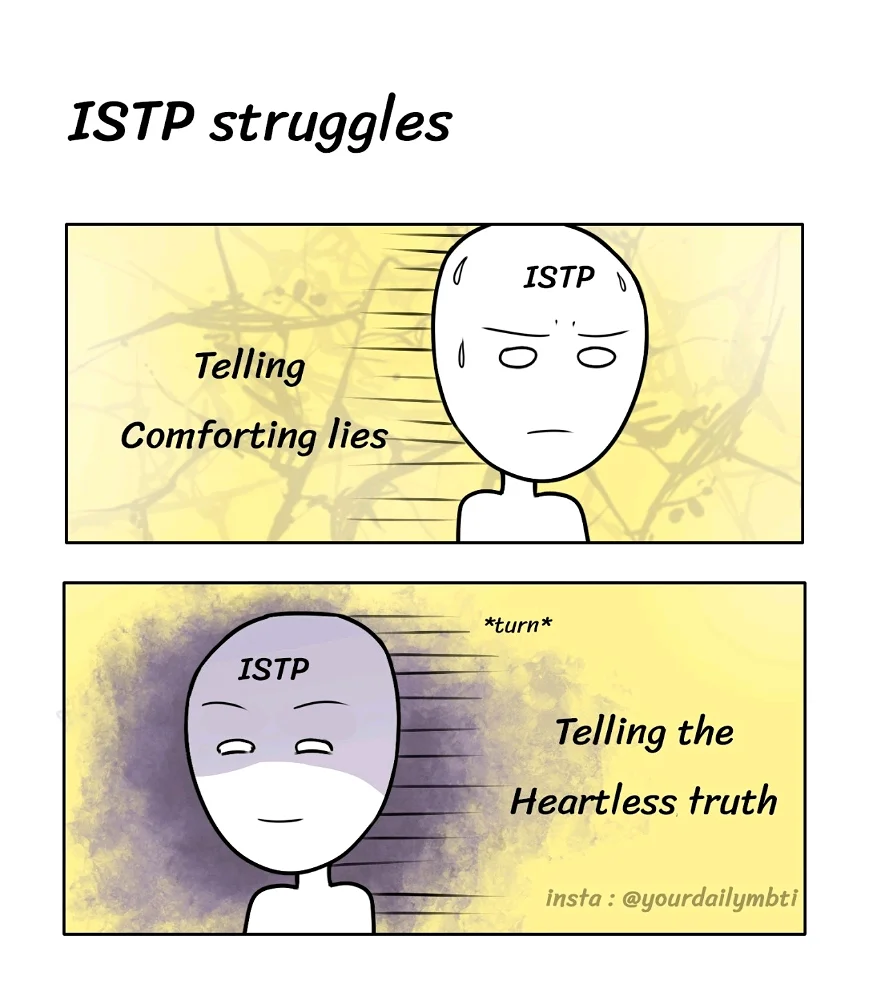We use cookies on our website for a number of purposes, including analytics, performance, and advertising. Learn more.
OK!
Boo
SIGN IN
ISTP Stress: Managing the Artisan's Tensions
By Boo Last Updated: December 4, 2024
ISTPs, often referred to as Artisans, are practical, independent, and thrive on problem-solving and spontaneity. They excel in situations that require tactical skill and adaptability. However, their preference for flexibility and hands-on action can lead to stress when they encounter overly structured environments, unnecessary rules, or lack of practical engagement.
In this page, we'll explore the specific stress triggers for ISTPs, identify the signs of stress in this personality type, and discuss effective strategies for managing stress. By understanding these factors, ISTPs can maintain their adaptability and continue to enjoy their practical pursuits without undue stress.
Explore the ISTP Wellness Series
- Wellness for an ISTP
- 10 Things that Excite ISTP
- The Guide to ISTP Anger
- Traits of a Toxic ISTP
- Surprising Sexuality of ISTP
Understanding ISTP Stress Dynamics
ISTPs are most comfortable in roles that allow them to use their skills to solve immediate problems. They prefer to live in the moment, responding to challenges as they arise. Stress often occurs for ISTPs when they are prevented from taking action or when they must adhere to strict guidelines or schedules.
Independence vs. Constriction
ISTPs experience stress in situations that limit their independence or force them into rigid structures. Their natural inclination is towards flexibility and freedom, especially in how they approach their tasks.
Common Stress Triggers for ISTPs
Several scenarios can particularly provoke stress in ISTPs due to their pragmatic and autonomous nature:
- Restrictive Environments: Situations where there are too many rules or restrictions that limit how they can work or solve problems.
- Lack of Hands-On Activities: Environments where there is little opportunity for practical engagement or problem-solving.
- Micromanagement: Being closely monitored or managed by others can be particularly stifling.
- Emotional Demands: High emotional or interpersonal demands can be draining and confusing.
- Routine and Repetition: Repetitive tasks that lack variety or challenge can lead to boredom and frustration.
Challenges of Theoretical or Abstract Contexts
ISTPs may also find stress in contexts that require extensive theoretical work or long-term planning that detracts from hands-on action.
Signs of Stress in ISTPs
Recognizing these signs can help ISTPs manage their stress more effectively:
- Irritability: Becoming easily frustrated, especially with inefficiencies or incompetence.
- Withdrawal: Pulling back from social interactions to focus on solitary activities or to avoid stressors.
- Risk-Taking: Engaging in riskier behaviors, perhaps as a way to feel control or alleviate boredom.
- Neglect of Routine: Ignoring necessary routine maintenance tasks, both in personal and professional life.
- Restlessness: An increase in restlessness, indicating a desire to escape from current constraints.
- Fatigue: Physical or mental exhaustion, particularly if forced to engage in disliked activities for prolonged periods.
Coping Mechanisms Tailored for ISTPs
ISTPs will find these strategies effective in managing stress, playing to their strengths of practicality and problem-solving:
- Flexibility in Schedule: Creating a more flexible schedule that allows for spontaneity and freedom.
- Physical Activity: Regular physical activities, like sports or hands-on hobbies, which help in reducing stress and increasing satisfaction.
- Setting Personal Projects: Engaging in personal projects that align with their interests and allow them to use their problem-solving skills.
- Minimizing Emotional Drama: Developing strategies to minimize involvement in situations that require intense emotional investment.
Embracing Practical Solutions
For ISTPs, finding practical solutions to their stressors can provide a sense of control and efficacy.
Long-Term Strategies for Stress Resilience
Building resilience against stress involves adopting strategies that align with the ISTP's need for action and independence:
- Skill Development: Continuously improving and adapting their skills to stay engaged and challenged.
- Seeking New Challenges: Looking for new and interesting problems to solve, which keeps their work and life engaging.
- Mindfulness Practices: Techniques such as meditation can help manage stress and improve focus when facing unavoidable constraints.
Frequently asked questions about ISTPs and stress
How can ISTPs manage stress from restrictive environments?
ISTPs should seek environments or negotiate conditions that allow more autonomy and fewer unnecessary restrictions.
What should ISTPs do when they lack practical engagement?
When lacking practical engagement, ISTPs should seek out or create opportunities that allow for hands-on problem-solving or learning new practical skills.
How can ISTPs handle routine and repetition?
To manage routine and repetition, ISTPs can try to automate as much as possible or rotate tasks to incorporate variety and maintain interest.
Enhancing the Artisan's Craft
For ISTPs, effectively managing stress is crucial for maintaining their independence and practical engagement in activities they enjoy. By understanding their unique stress triggers and employing appropriate coping mechanisms, ISTPs can continue to thrive in environments that respect their need for flexibility and practical problem-solving.
MEET NEW PEOPLE
JOIN NOW
40,000,000+ DOWNLOADS
ISTP People and Characters
Universes
Personalities
Meet New People
40,000,000+ DOWNLOADS
JOIN NOW





















































